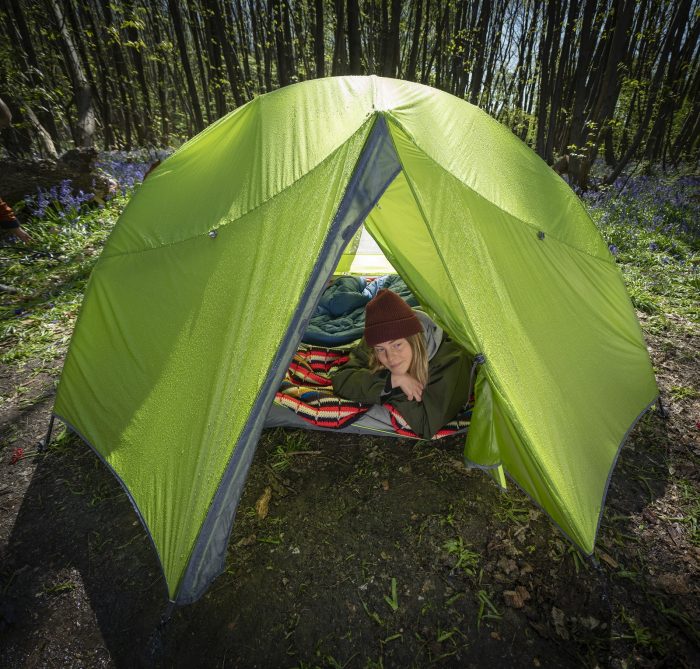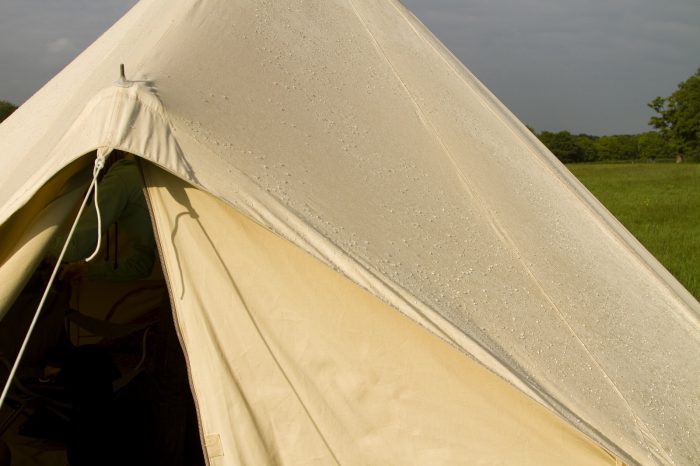Tents can last twice their effective lifetime with Nikwax®!

You may be starting to think about unpacking and dusting off your camping gear ready for this year’s outdoor adventures. However, will your tent be ready for the new season ahead? If you don’t take good care of it, your tent could start to degrade, with weakened fabric and the chance of it getting damp inside which can lead to mildew. However, it is easy to look after and save your tent from the risk of ending up in landfill – which we all know is not good for the environment.
Just follow our trusty guide below to the aftercare that will keep your tent in top condition. By using Nikwax aftercare, your tent can last twice its effective lifetime!
Synthetic tents need specialist aftercare because their fabric is especially vulnerable to ultraviolet (UV) light – just 2 weeks continuous exposure can reduce tear strength by 50%! UV rays also destroy the durable water repellent (DWR) coating on the tent’s outer fabric, which could ultimately result in you getting wet inside!
Cotton /canvas tents are also a popular choice for tents, with cotton being a naturally strong and hard-wearing material. However, cotton fabrics are susceptible to water – they easily absorb it, which causes weight gain and the fabric can take a long time to dry out. Not ideal if you are camping in bad weather!

Nikwax tent aftercare will maintain high performance, so you can sleep in the great outdoors and stay dry and comfortable!
Keep your synthetic or cotton/canvas tent clean with Nikwax Tent & Gear SolarWash®.
- Dirt and other contaminants that compromise a tent’s DWR are efficiently removed, so the water repellency is revived.
- The safe, water-based formula increases the fabric’s resistance to UV light.
- Easy-to-use by hand as a spray-on, Tent & Gear SolarWash can be used up to three times to clean and revitalise the DWR of a tent before re-proofing is required.
- Use approximately 50ml of product for 1m2 of fabric.
- Spray evenly to the outside and rub in with a damp cloth – paying attention to any really dirty areas.
- Rinse with clean water and, if not reproofing, ensure the tent is completely dry before packing it away.
- Tent & Gear SolarWash can be used on both synthetic tents and cotton/canvas tents.
Over time, and through use, the DWR on synthetic tents wears off and needs to be replenished. When Tent & Gear SolarWash no longer revives the DWR on your synthetic tent, then it is time to reproof.

Keep your synthetic tent protected from the rain and UV rays with Nikwax Tent & Gear SolarProof®.
- Tent & Gear SolarProof® provides an effective water repellent finish to ensure tents maintain their performance, keeping you warm and dry when camping.
- It also provides UV protection.
- To get the most from this product, apply it to your tent from new; although older tents also benefit from its high performance protection – especially when used with Tent & Gear SolarWash.
- You can apply it by hand to wet or dry fabrics.
- Use approximately 50ml of product per 1m2 of fabric.
- Spray evenly to the outer fabric and leave for 2 minutes.
- Remove any surplus with a damp cloth and check that no areas have been missed.
- After several minutes check again and remove any surplus.
- The DWR will develop upon drying and your tent should be thoroughly dried before packing it away.
- Tent & Gear SolarProof can also be applied to synthetic rucksacks and bike panniers (avoid rucksack straps).
When Tent & Gear SolarWash no longer revives the DWR on your cotton/canvas tent, then you need to reproof it.

Keep your cotton/canvas tent protected with Nikwax Cotton Proof.
- Cotton Proof is specifically designed for use on cotton, polycotton and canvas.
- Easily applied by hand, Cotton Proof should be diluted before being applied to tents (add 1 part product to 9 parts water and mix well).
- Cotton Proof can be applied to wet or dry fabric using a brush or sponge – all areas should be covered and you should ensure the product penetrates the surface of the fabric.
- Remove any surplus product with a damp cloth.
- Check the fabric after several minutes and remove any further surplus with a damp cloth.
- A flexible water repellent treatment is left on the individual fibres and will develop upon air drying; moisture vapour can then pass through the fabric, maintaining breathability of the cotton/canvas, and optimising its performance in wet weather.
- Ensure your tent is fully dry before it packing away.

Leave a Reply